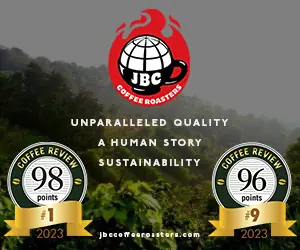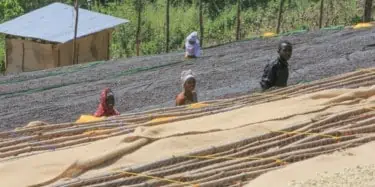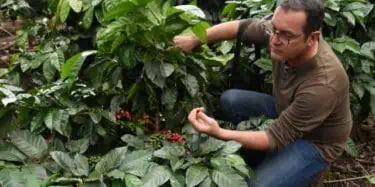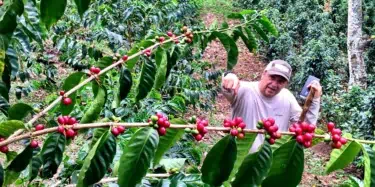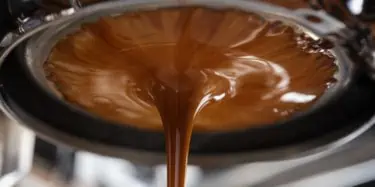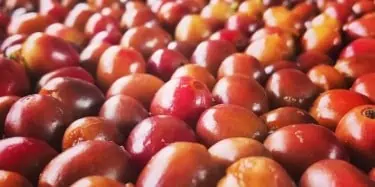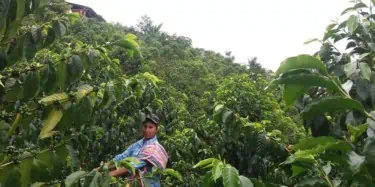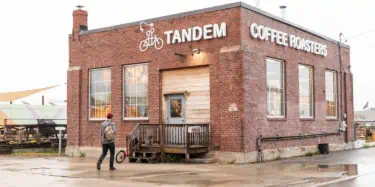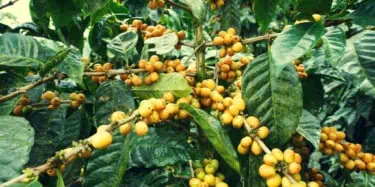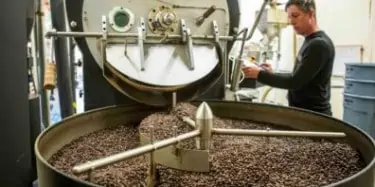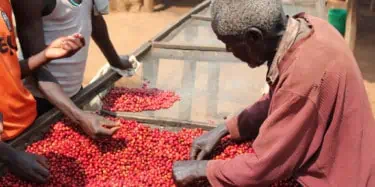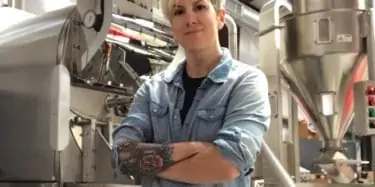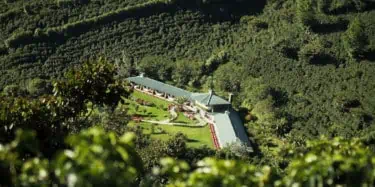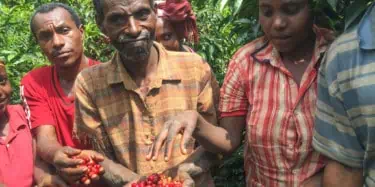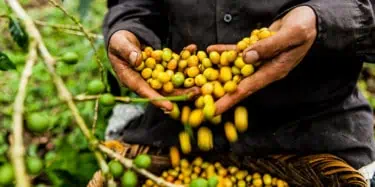For most of the world, the first months of 2020 have been a challenging season, with millions across the globe either anticipating, in the throes of, or rebounding from the COVID-19 pandemic. For the past two months, Berkeley, California, where Coffee Review is based, has been under a statewide shelter-in-place order. Whether we’re too busy or not busy enough, we’ve all had time at home to
Coffee Roasters of the Northwestern U.S.: Classic Coffees, Resilient Communities
Each year we spotlight local roasters in the U.S. specifically by regional geography, choosing one region of the country to look at in depth. This year, we invited roasters from the Northwest states of Washington, Oregon, Montana, Idaho and Wyoming to submit coffees for a blind cupping, and we report here on the nine top-scoring entries. In many ways, the Northwestern U.S. was the birthplace of
Single-Origin Coffees in Supermarkets
We track the specialty coffee industry obsessively, day in and day out, documenting its latest trends toward bespoke experiences (both at cafés and at home) and celebrating the farmers and roasters who are pushing the envelope of coffee experimentation and differentiation in unprecedented ways. But what options are available to coffee-lovers who don’t have the time or inclination to order
2019 Holiday Coffees: Celebratory Blends That Elevate the Ordinary
Every December, we look at some aspect of the vast array of holiday coffees on offer from roasters around the world. This year, we focus on blends — specifically, holiday-themed blends, as interpreted by roasters and available only during the holiday season (roughly November to February). Creating exciting holiday blends has become something of a year-end competition among good specialty roasters
Idealism and Achievement: 8 New North American Roasting Companies
Opening a new coffee roastery today seems like a daunting idea. There's the increasingly troubled U.S. economy, but even more alarming is the unprecedented turmoil in the global coffee industry, which includes insultingly low prices paid to farmers, infrastructure challenges, and climate change, which has virtually wiped out some regional coffee industries, put many more under extreme stress, and
Geisha Coffees Continue to Shatter Sales Records — Are They Worth The Hype?
When we last wrote in depth about Geisha (also spelled Gesha) coffees in 2017, a 100-pound lot of this prized variety of Arabica, grown at Hacienda La Esmeralda by the Peterson family, had just broken the then-current record for the highest price ever paid for a green coffee: $601 per pound. Flash forward to July of this year, when that record was shattered by the Lamastus family, whose Elida
Exploring “Classic” Espresso Blends: Taiwan Roasters
When we put out our call for classic espresso blends for our June 2019 report, we were not prepared for the overwhelming response: We received 54 samples from roasters based in North America and 46 from roasters based in Asia, all in Taiwan. The magnitude of the response was, perhaps, due to our openness. We had decided not to be prescriptive about what constitutes "classic," but to let roasters
Exploring “Classic” Espresso Blends: North American Roasters
Once a year, we ask roasters to submit coffees roasted for espresso for a special tasting with an outside lab partner, always focused around a specific theme. In recent years, we've covered natural-process and single-origin espresso from the Americas; in 2015, we reported on "open-source" espresso blends, documenting the growing trend of openly revealing blend components to consumers, rather than
Hawai’i: A New Wave of Coffee Innovation
The Hawaiian Islands are known the world over for beautiful beaches, diverse microclimates, and both active and dormant volcanoes — pretty much paradise, as the cliché goes. Hawaiian culture is both uniquely American and, in many ways, happily incongruous with mainstream American culture. One island in particular, Hawai'i Island (often called the Big Island), produces the famous, widely
Revisiting the Andes: Coffees From Peru, Ecuador and Bolivia
The three coffee-growing countries that range along the Andes south of Colombia — Ecuador, Peru and Bolivia — have rich and storied coffee histories. When Coffee Review last dove in to this region, with reports in 2010 and 2013, we found many impressively solid, softly balanced coffees in the Latin-American tradition — all produced from classic tree varieties like Typica and Caturra and processed
New England Coffee Roasters: Embracing (and Reinventing) Tradition
The very day we spoke with several roasters in New England whose coffees are featured in this month's tasting report, Dunkin' Brands, parent company of Dunkin' Donuts (now rebranding simply as Dunkin’) and headquartered in Massachusetts, announced plans for expansion. And the company's "Blueprint for Growth" centers not on doughnuts, but coffee, including the relaunch of the Dunkin’ espresso
2018 Holiday Gift Coffees
Every year in November, we put out a call for special coffees that roasters around the world are featuring for the holidays. It's always a surprise and a delight to discover what surfaces during this weeks-long cupping. And what we learn never fails to be compelling in multi-faceted ways. Some roasters approach seasonal offerings by composing creative, often unique, blends, while others prefer
“Big-Bean” Coffee Varieties: Novelty, Scarcity, and Atypical Sensory Pleasures
Among the hundreds of coffees we review each year at Coffee Review, a very small percentage represent what we've come to affectionately call "big-bean" varieties, coffee from tree varieties that produce beans that are dramatically larger than average. The most common of these are Pacamara, Maragogipe and Maracaturra, though there are some even more obscure varieties whose beans are also
Mountain States Coffee Roasters: High Elevations, Classic Coffees
In 2017, Coffee Review began exploring the vibrant roasting scenes in various regions of the U.S., beginning with last year’s popular tasting report on coffees of the American Southwest. This year we take a look at roasters in the U.S. mountain states: Colorado, Idaho, Montana, Utah, and Wyoming. We received samples from all five states. Of the many lovely and interesting coffees among them, the
African Great Lakes Coffees: Burundi, Rwanda, Uganda, Congo, Tanzania
The countries whose coffee regions nestle around the Great Lakes of Central Africa—Rwanda, Burundi, and key growing areas of Uganda, Tanzania, and the Democratic Republic of the Congo—make appearances in the news cycle more often for conflict than for coffee. But these countries are also longtime coffee-producing lands that have, within the last 10 years or so, emerged as important sources of
Women in Coffee: Why It Matters That “She’s the Roaster”
Last summer, we began our exploration of women's roles in the complex coffee supply chain by looking at the work of farmers—women who work in coffee production as pickers, managers, members of cooperatives, and owners of small farms. In this month's report, we turn our attention to those women who are crucial in the next step of the supply chain: turning green coffee into roasted. We structured
Blending Coffees: Craft, Intuition and Thematic Riffs
Blending any two or more things together is a curious and complex act. In winemaking, grapes are often blended to combine extremes in character while simultaneously softening each. Foods may be blended for contrast: Lemon and butter combined, for example, make a classic sauce for pasta or fish that is both richly creamy and tart, a flavor profile that a single food can’t provide. Coffee is an
2017 Holiday Gift Coffees
Each year, we ask roasters to send us exceptional coffees available only during the holidays, coffees that might make particularly gratifying gifts or splurges for coffee-lovers. In past years, approaches have ranged from particularly fine lots of classic coffees that roasters reserved for the holiday season, to rare and often expensive seasonally available micro-lot coffees, to ingenious and
Organic-Certified Coffees from Africa: Benefits, Challenges, Complexities
Certified organic coffees must be propagated, grown, processed, transported, stored, and roasted without contact with synthetic chemicals—particularly without contact with pesticides and herbicides. The certification process (carried out by a variety of organizations operating inside a common framework) is lengthy, thorough, rather expensive, but apparently reliable and free of abuse. The use of
The New Nicaragua: Direct Trade Coffees Rule
When we first reported on coffees from Nicaragua, in 2004, the overarching theme was economic development. Specialty coffee was viewed as a way of opening access to economic and social benefits for Nicaragua’s many small- to medium-holding coffee farmers, most of whom had been decimated by the global drop in coffee prices during 1999-2003, and prior to that, by the long war that isolated the





